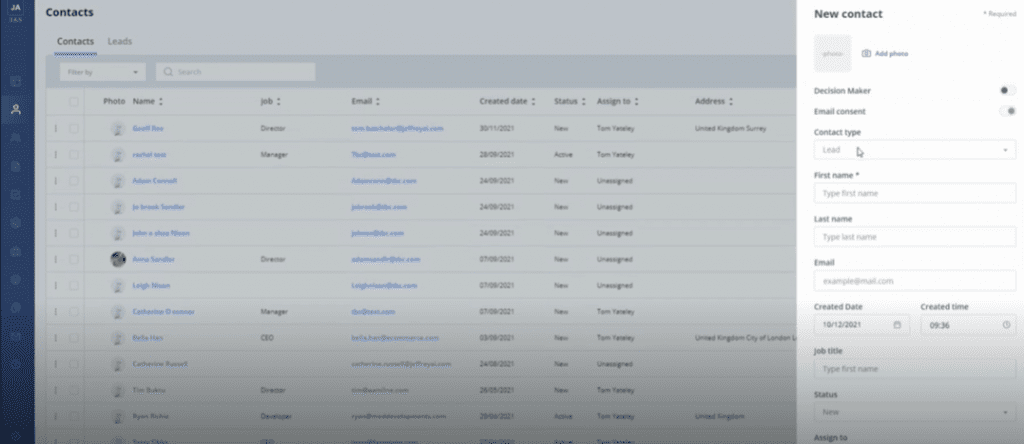
What is cold calling?
Cold calling is a sales technique where a salesperson contacts potential customers who have not expressed any prior interest or connection with the business. It involves reaching out to individuals or businesses through phone calls or other forms of communication, to sell a product or service. Cold calling is often seen as an effective way to generate leads and expand a customer base.
The process of cold calling usually begins with researching and identifying potential leads. Salespeople then make unsolicited calls to these leads, introducing themselves and their offerings. It is important to note that cold calling is typically done without any prior relationship or connection with the prospect, making it a challenging approach that requires skill and persistence.
What is warm calling?
Warm calling, on the other hand, involves reaching out to potential customers who have shown some level of interest or connection with the business. This could be through previous interactions, such as inquiries, website visits, or attending events. Warm calling is a more targeted and personalised approach compared to cold calling. It allows salespeople to establish a warm connection with prospects, increasing the likelihood of successful sales interactions.
The purpose of warm calling is to build on existing interests and establish a relationship with potential customers. It offers an opportunity to provide personalised solutions and address specific needs, based on the knowledge gained from previous interactions. Warm calling is often seen as a more effective and efficient way to close deals, as it leverages existing connections and builds upon prior engagement.
The purpose of cold calling
The main purpose of cold calling is to initiate contact with potential customers who may not be aware of the business or its offerings. Cold calling aims to generate interest, create awareness, and ultimately convert prospects into customers. While it can be challenging and sometimes met with resistance, successful cold calling can result in new leads, sales opportunities, and business growth.
Cold calling allows businesses to reach a wide audience and expand their customer base. It provides an opportunity to introduce products or services to potential customers who may not have encountered them otherwise. Cold calling also enables salespeople to gather valuable market feedback and insights, helping businesses refine their offerings and strategies.
The purpose of warm calling
Warm calling, on the other hand, focuses on building relationships and nurturing existing leads. The purpose of warm calling is to provide personalised solutions, address specific needs, and ultimately convert prospects into loyal customers. By leveraging prior interactions and knowledge, warm calling aims to establish trust, credibility, and a deeper connection with potential customers.
Warm calling allows businesses to focus their efforts on high-quality leads, increasing the chances of successful conversions. It helps in building long-term customer relationships, as the personalised approach demonstrates care and attention to individual needs. Warm calling also enables businesses to upsell or cross-sell their offerings to existing customers, driving additional revenue and customer loyalty.
Benefits of cold calling

Cold calling offers several benefits for businesses looking to expand their customer base and generate leads. Here are some key advantages of cold calling:
- Broad reach: Cold calling allows businesses to reach a wide audience, including potential customers who may not be actively searching for products or services. It opens up new opportunities and markets.
- Lead generation: Cold calling can be an effective lead generation technique. It helps in identifying potential customers and gathering valuable information that can be used for future sales efforts.
- Market research: Through cold calling, businesses can gather insights and feedback from potential customers. This information can be used to refine products, improve marketing strategies, and stay ahead of the competition.
- Immediate feedback: Cold calling provides immediate feedback on sales pitches, allowing businesses to fine-tune their approach and messaging based on real-time responses from prospects.
Benefits of warm calling
Warm calling offers several advantages over cold calling, particularly when it comes to building relationships and increasing conversion rates. Here are some key benefits of warm calling:
- Higher conversion rates: Warm calling has higher conversion rates compared to cold calling. By leveraging existing interests and connections, warm calling establishes trust and credibility, making it easier to close deals.
- Personalised approach: Warm calling allows salespeople to provide personalised solutions and address the specific needs of potential customers. This tailored approach increases the chances of successful conversions.
- Deeper connections: The prior engagement and interactions in warm calling help in building deeper connections with potential customers. This can lead to long-term relationships, repeat business, and customer loyalty.
- Upselling and cross-selling: Warm calling provides an opportunity to upsell or cross-sell to existing customers who have already shown interest in the business. This can drive additional revenue and maximise customer value.
Cold calling techniques and strategies
Successful cold calling requires a combination of effective techniques and strategies. Here are some key techniques to consider:
- Research and preparation: Before making cold calls, it is essential to research and gather information about the target audience. This helps in personalising the pitch and understanding the needs and pain points of potential customers.
- Clear and concise messaging: Cold calling pitches should be clear, concise, and tailored to the target audience. It is important to communicate the value proposition effectively and address any objections or concerns.
- Active listening and empathy: During cold calls, it is crucial to actively listen to the prospect and show empathy towards their needs and challenges. This helps in building rapport and establishing a connection.
- Follow-up and persistence: Following up with prospects after the initial cold call is essential. Persistence can often lead to opportunities that may have been missed initially.
Warm calling techniques and strategies
Warm calling requires a different set of techniques and strategies compared to cold calling. Here are some key techniques to consider:
- Personalised approach: Warm calling should be personalised based on the prior interactions and knowledge gained about the prospect. This helps in establishing a connection and showing genuine interest in their needs.
- Building on previous engagement: During warm calls, referring to previous interactions or interests shown by the prospect is important. This demonstrates attention to detail and reinforces the relationship.
- Providing tailored solutions: Warm calling offers an opportunity to provide tailored solutions based on the prospect’s specific needs. This customised approach increases the chances of successful conversions.
- Building trust and credibility: Warm calling is about building trust and credibility. It is important to focus on establishing a relationship rather than pushing for a quick sale. This long-term approach pays off in the form of loyal customers.
Cold calling vs. warm calling: key differences
While both cold calling and warm calling aim to generate leads and drive sales, they differ in several key aspects. Here are the main differences between cold calling and warm calling:
- Relationship status: Cold calling involves reaching out to prospects with no prior relationship or connection, while warm calling targets prospects who have shown some level of interest or engagement.
- Level of personalisation: Cold calling is less personalised, as it focuses on introducing the business and its offerings to a wider audience. Warm calling, on the other hand, is highly personalised, leveraging prior interactions and knowledge.
- Conversion rates: Warm calling typically has higher conversion rates compared to cold calling. The existing interest and connection in warm calling make it easier to establish trust and close deals.
- Time and effort: Cold calling requires more time and effort to generate leads and build relationships from scratch. Warm calling saves time and effort by focusing on existing leads and connections.
When to use cold calling vs. warm calling

The decision to use cold calling or warm calling depends on several factors, including the business goals, target audience, and available resources. Here are some scenarios where each approach may be more suitable:
- Cold calling: Cold calling can be effective when targeting a broad audience and expanding the customer base. It suits businesses looking to generate new leads and create awareness about their offerings.
- Warm calling: Warm calling is more appropriate when the business has existing leads or connections that can be leveraged. It is suitable for businesses looking to nurture relationships, provide personalised solutions, and increase conversion rates.
- Combination approach: In many cases, a combination of cold calling and warm calling can be effective. This allows businesses to reach a wider audience while leveraging existing connections to increase conversion rates.
The role of technology in cold calling and warm calling

Technology plays a crucial role in both cold calling and warm calling. Here are some ways technology can enhance the effectiveness of these sales techniques:
- JeffreyAI: AI Business Automation Software that helps in organising and managing leads, tracking interactions, and providing valuable insights for both cold calling and warm calling efforts.
- Automated dialling and workflows: Automated dialling systems streamline the cold calling process by automatically dialling numbers and routing calls to available sales representatives. Workflows can help in guiding salespeople through the warm calling process.
- Data analytics and reporting: Technology allows businesses to analyse data and generate reports on the success of cold calling and warm calling efforts. This helps in identifying trends, optimising strategies, and making data-driven decisions.
- Communication tools: Technology provides various communication tools, such as email, messaging apps, and video conferencing, which can be used for both cold calling and warm calling. These tools facilitate efficient and effective communication with prospects.
Tips for successful cold calling and warm calling
Regardless of the approach, successful cold calling and warm calling require careful planning and execution. Here are some tips to enhance your cold-calling and warm-calling efforts:
- Research your target audience: Understand your target audience’s needs, pain points, and preferences before making calls. This allows for personalised and targeted pitches.
- Practice active listening: Listen attentively to prospects during calls and show empathy towards their needs. This helps in building rapport and establishing trust.
- Follow up: Follow up with prospects after the initial call, whether it’s a cold call or a warm call. Persistence can often lead to opportunities that may have been missed initially.
- Continuously refine your approach: Regularly analyse data and feedback to improve your cold-calling and warm-calling strategies. Adapt your messaging and techniques based on the results.
Common challenges in cold calling and warm calling
Cold calling and warm calling come with their own set of challenges. Here are some common challenges faced by salespeople:
- Rejection and resistance: Cold calling often results in rejection and resistance from prospects, making it mentally and emotionally challenging for salespeople. Handling objections and maintaining motivation is crucial.
- Limited information: Cold calling requires gathering information about prospects on the spot, which can be challenging. Warm calling also relies on accurate information to provide personalised solutions.
- Time management: Balancing the time spent on cold calling and warm calling can be a challenge. Salespeople need to allocate their time effectively to maximise results.
- Adapting to different personalities: Salespeople encounter prospects with diverse personalities and communication styles. Adapting to these differences and tailoring the approach accordingly is key to success.
Conclusion: Warm Calling vs Cold Calling
Understanding the difference between warm calling and cold calling is essential for businesses looking to optimise their sales strategies. While both approaches have their benefits and challenges, a combination of cold calling and warm calling can lead to greater success.
Unlock Efficiency, Unleash Growth! Use JeffreyAI to transform the way your business engages with its clients and elevate your business strategies. JeffreyAI’s Cold Calling Telemarketing Service is a telemarketing service designed to meet the unique needs of businesses looking to generate new leads and sales. It offers a range of cold calling services from crafting compelling scripts to conducting outbound calls and scheduling appointments.
